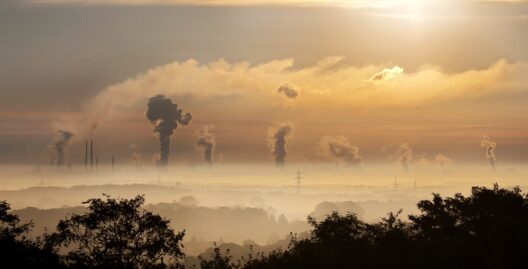In recent years, discussions about climate change have pervaded public discourse, capturing the attention of individuals across the globe. The term “climate” itself is frequently bandied about in debates, news articles, and casual conversations. But what does it truly signify, and how does it weave into the larger tapestry of environmental terminology? This guide elucidates the intricacies of climate terminology, examining the fundamental components and implications that arise from this often-misunderstood concept.
At its most basic, climate refers to the long-term patterns and averages of temperature, humidity, wind, precipitation, and other atmospheric conditions in a given region. Unlike weather, which describes short-term atmospheric conditions, climate offers a macro perspective, shedding light on the habitual environmental phenomena that can be anticipated over extended periods, often decades or longer. The juxtaposition of weather and climate is not merely semantic; understanding this distinction is pivotal in grasping the rising urgency of climate action.
One might ask, why the fascination with climate? This curiosity stems from humanity’s intrinsic relationship with the environment. As societies evolve, their livelihoods and cultural frameworks are inextricably linked to climatic conditions. Ancient civilizations depended on predictable seasonal changes for agriculture. In contemporary times, the consequences of climate change—such as altered weather patterns, rising sea levels, and extreme weather events—pose existential threats to livelihoods and ecosystems alike.
Yet the word “climate” is frequently surrounded by a plethora of associated terminologies that amplify its complexity. Terms such as ‘global warming,’ ‘greenhouse gases,’ and ‘carbon footprint’ frequently emerge in discussions regarding climate, and each bears significance in understanding the overarching narrative of environmental degradation.
Global warming, for instance, refers to the ongoing rise in average temperatures of Earth’s atmosphere due to increased concentrations of greenhouse gases resulting from human activities. This phenomenon has severe ramifications, as it not only triggers rising temperatures but also contributes to biodiversity loss and ecosystem disintegration. The dichotomy of ‘global warming’ and ‘climate change’ often leads to confusion; while global warming refers specifically to the increase in temperature, climate change encompasses all alterations in climate patterns, including precipitation changes and extreme weather phenomena.
Greenhouse gases are another critical element in the climate lexicon. These gases, including carbon dioxide (CO2), methane (CH4), and nitrous oxide (N2O), trap heat in the atmosphere, thus facilitating the greenhouse effect. This natural process is essential for maintaining temperatures conducive to life on Earth, but human activities—particularly fossil fuel combustion, deforestation, and agricultural practices—have greatly exacerbated this effect, leading to detrimental climatic changes. Understanding the role of these gases is essential for grasifying our impact on global temperatures.
In examining the environmental terminology, it becomes evident that terms like ‘carbon footprint’ further complicate the dialogue around climate. This term quantifies the total greenhouse gas emissions directly and indirectly attributable to an individual, organization, or product. By measuring one’s carbon footprint, it becomes feasible to understand and subsequently mitigate one’s contribution to climate change. This metric emphasizes personal responsibility in the wider context of global climate action, underscoring a shared capacity for effecting positive change.
The intricacy of climate terminology extends beyond scientific definitions; it encapsulates a social narrative woven with psychological nuances. Far from being a mere collection of words, this lexicon resonates with existential concerns and aspirations for a sustainable future. The urgency reflected in climate discourse stems from a collective recognition that humanity’s survival hinges on addressing the challenges posed by climatic shifts. This realization fosters both anxiety and a sense of agency, driving people towards activism and advocacy for policy transformations.
The discussion of climate is also replete with ethical considerations, raising questions of equity and justice. Climate change disproportionately affects vulnerable populations—often those least responsible for the problem—exacerbating existing inequalities. This intersection of climate with social issues complicates the narrative, inviting critical examination of how resources are allocated and who bears the burden of climate-related impacts. Concepts such as climate justice emerge from this discourse, advocating for the equitable distribution of responsibilities and resources in the face of climate adversity.
In addressing the myriad facets of climate terminology, it is crucial to recognize the importance of education and communication. Engaging in informed dialogue about climate fosters a more robust public understanding, potentially catalyzing action at both the individual and systemic levels. Educational initiatives that demystify climate terminology serve not merely to inform but also to empower citizens to participate actively in mitigation strategies, be it through personal lifestyle changes or advocacy for comprehensive policy reforms.
As the world grapples with the pressing consequences of climate change, the significance of precise terminology cannot be overstated. Each term serves as a thread in the fabric of climate discourse, contributing to a comprehensive understanding of environmental phenomena. By cultivating awareness of these terms and their implications, we strengthen our collective ability to respond to the multifaceted challenges of climate change.
In summary, while “climate” is indeed a noun, it embodies a nuanced concept, crucial for understanding both the challenges and responsibilities humanity faces in the age of climate change. It serves as a gateway to deeper inquiries about our planet, our societal structures, and our potential for innovation in the face of adversity. Acknowledging and elucidating the language surrounding climate enables a more informed populace—a prerequisite for impactful action against one of the most significant challenges of our time.







